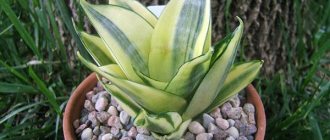Ficus is not only a beautiful decoration for any room, but also a lot of trouble associated with regular care of this plant, which loves to stretch upward and needs pruning from time to time. It is carried out in order to give the crown an optimal shape, but at the same time, as with any operation, it is very important not to cause harm. This article will tell lovers of indoor plants how to prune ficus so that it grows beautifully and continues to please the eye with its branches.
How to pinch a ficus to bush - step by step
If you pinch the ficus correctly so that it bushes, a very beautiful decorative flower will grow. With timely correction, it will not grow upward, but will produce lateral shoots and splendor. How to pinch a ficus and at what time it is painless to carry out this procedure, we will consider in this article.
- Step-by-step pinching process
- How to pinch if it reaches up
- How to make it branch
- How to make side shoots sprout
- Questions and answers
- When is the best time to carry out the pinching process?
- Why do you need to pinch ficus?
- Which ficus trees do not need pinching?
- Features of pinching different types of ficus
- Ficus benjamina
- Ficus rubbery
- Further care for ficus
Required tools and materials:
- Container with water.
- Disinfection solution.
- Knife, pruning shears with sharp blades.
- A rough piece of material for wiping.
Procedure and important points on how to pinch:
- Make sure the plant has reached an acceptable height. Wipe the instrument with disinfectant liquid. This could be a solution of chlorhexidine, vodka, alcohol or another substance with the desired effect. Check the sharpness of the blade. The first pinching option is suitable if the ficus has not outgrown and its height is optimal. Trim the top, thin shoot slightly below the growth line with a straight cut.
Avoid contact with mucous membranes. If this happens, rinse quickly with plenty of running water.
- We trim the overgrown plant differently. At an acceptable height (a place above which further growth is undesirable), you will find a twig or leaf that grows below this point. Cut 6 - 8 centimeters above the leaf or branch (use an oblique cut). Also focus on the bud on the other side of the trunk - the lower edge of the cut should be in line with the bud, and the upper edge above it.
- Dampen a piece of cloth with water. Use it to remove the released juice from the trunk. At this point, the treatment is completed and the flower will cope with wound healing on its own. Do not reuse the cloth used to remove the juice, but throw it away.
- To help your ficus grow more actively, be sure to use fertilizer within a month after pinching. Replace part of the soil in which it grows. Can be transplanted into a larger container. A year later, in the spring, perform a similar operation with side shoots. The result will delight you with splendor and beauty.
Do all plants need pinching?
Pinching is possible.
The procedure is required if necessary to stop excessive upward growth and increase the number of side branches for splendor. That is, to create the desired appearance (volume and height). Not every ficus responds well to such actions to improve it. Some of them do not want to bush to the side. Watch the green pet. If you don't see the desired result, go another way. Plant 3-4 cuttings in one container and after a while you will see a lush bush.
Creating unusual shapes
The formation of the crown of rubber ficus can be done not only in the shape of an oval or ball. There are other pruning methods that can result in trees with unique shapes for indoor design.
Standard tree
Formation of rubber ficus at home in the form of a trunk:
- The standard form can only be created from unformed ficus without lignification on the trunks.
- Side shoots must be removed regularly until 5 top branches remain.
- When the tree reaches the desired height, pinch the apical shoot, not forgetting to remove the lateral shoots.
- While the stems remain flexible and without bark, it is necessary to organize a support. Keep the trunk upright throughout the growing period.
The stamp can be multi-tiered. To form the crown in this way, divide it into 4-5 parts. From the odd ones, make crown tiers, and from the even ones, make spaces between the tiers, for which the shoots are cut 5-7 cm shorter than the rest.
Fence
A hedge from a rubber-bearing variety of ficus can be made as follows:
- select at least 5-7 seedlings and a long, low container for planting;
- place all seedlings in a tray in one row or in a circle, the distance between shoots should be at least 10 cm;
- the fence is formed from the crown - cut at the same height.
Formation of the rubber ficus crown
To perform the procedure, you need to prepare: a knife or pruning shears, a solution for disinfecting instruments (alcohol or hydrogen peroxide), a soft cloth, a container of water. How to pinch rubber ficus? To do this, follow the instructions below:
Ficus juice is poisonous, so all manipulations are carried out with gloves.
Rubber-bearing ficus for modern interiors: from transplantation to propagation
Among plant growers, the rubber ficus is in particular demand; propagation at home is not difficult, and care requires a minimum of time. This inhabitant of tropical forests takes root perfectly at home, delighting with its unpretentiousness and decorative foliage.
The plant feels great at temperatures:
- from +20 to 30 °C in summer;
Variety Mix - from +15 °C in winter.
The only problem is rapid growth and poor branching. To prevent this, it is recommended to carry out crown molding in a timely manner.
If for some reason the plant has stretched out and lost some of its foliage, then it is better to reproduce and grow several new specimens. For this, it is more advisable to use cuttings or layering.
Growing it, for example, like cyclamen from seeds or begonia, is problematic.
To prevent tropical exotic plants from losing their decorative properties, they should be replanted and pruned in the spring. Thanks to such procedures, it will begin to actively branch and form a beautiful crown.
From cuttings and layering in a tree
Rubber-bearing ficus, or elastica, is a crop endowed with large, fleshy oval leaves.
In its natural habitat, the plant grows above 30 m and forms many aerial roots, which hang from the tree and eventually grow into the soil.
Under favorable conditions in an apartment or office, the perennial will grow above 2 m, adding 45 cm per year. If the plant has grown to the ceiling, it can be safely trimmed and the tops used for rooting.
Presentable tree
How to propagate rubber ficus at home without experience? There are several ways to obtain new instances:
- rooting cuttings;
- use of layering;
- propagation by leaf.
We use cuttings for propagation
Propagation of rubber ficus by cuttings is a popular option that gardeners use to acquire a new tree.
The apical part is best suited as a cutting, but shoots can also be used. The size of the workpiece should be 10-15 cm. Before planting, all leaves except the top 2 are removed from the cuttings.
Excess foliage will only evaporate moisture, reducing the chances of rooting.
Cut the cuttings with a sharp knife at an angle of 45°. Afterwards, it is recommended to hold it under running water until the milky juice stops flowing out. Then the workpiece is sent to a container with water until roots form.
Rooting in sand or soil works well. In this case, the lower part of the workpiece is treated with Kornevin.
In order to reduce moisture evaporation, experts recommend rolling the remaining leaves on the cutting into a tube and securing with an elastic band.
The prepared shoot is planted into the substrate at a slight angle, deepened by one internode. The soil is thoroughly watered, then a greenhouse is built from a plastic bottle or bag. In the future, care will consist of spraying and airing the installed structure.
The rooting process takes about 20 days.
Knowing how to root rubber ficus, you can grow several specimens at once for yourself or friends.
You can root the prepared planting material in a container of water or special peat tablets.
Agricultural technology:
- Use settled water with the addition of charcoal.
The main rule for rooting cuttings of rubber ficus in water is that the leaves do not come into contact with the liquid. Ficus cuttings for rooting - If the shoot is small, then for ease of placement in the container you need to prepare a foam circle 1 cm thick. In the center of the foam you will have to provide a small hole for the cutting.
- It is recommended to cover the top of the container with a bag to maintain higher humidity.
- Caring for a new recruit will involve adding water as it evaporates from the container.
After about 2-3 weeks, callus will begin to form, then small roots. As soon as the roots grow a little, you can start transplanting into a flower pot. In the first days after transplantation, the recruit is sent to partial shade, providing him with high humidity.
Peat tablets as a newfangled rooting method
Among modern means, most gardeners choose peat tablets that contain growth stimulants and antibacterial components.
Advantages of rooting tops and side cuttings in purchased peat tablets:
- necessary breathability to saturate the lower part of the cutting with oxygen;
- the plant is not subject to harmful decay;
- active growth of the root system is ensured;
Peat tablets for planting - the seedling is sent to the pot along with the tablet, so damage to the root system is minimized.
Peat tablets are available with a diameter of 24 to 70 mm, so you always have the opportunity to choose the appropriate option for rooting.
After soaking in water, their size increases approximately 5 times in height; the change in width is insignificant.
It is more convenient to purchase agricultural material with a mesh that prevents the peat structure from scattering. Be sure to study the information about the acidity level.
The process of preparing cuttings for planting in peat tablets does not differ from that indicated above. The agricultural material itself is soaked in warm liquid for 30-40 minutes before planting.
After swelling, the tablets are squeezed out, and a small depression is made in the central part for escape. After the work is done, the seedling is sent to a plastic greenhouse.
Subsequent care consists of timely watering and ventilation.
Rubber-bearing ficus from cuttings and leaves
For propagation by layering you will need:
- cut the trunk by 1/3 and place a match in it in order to avoid its edges from closing;
Reproduction scheme by layering - wrap the incision with moss and polyethylene, securing it with tape or thread.
As soon as the first roots appear in this part, the shoot will need to be separated below the newly developing root system and planted in the ground.
Not everyone can grow ficus rubber from a leaf. For successful rooting, it is important to choose the right workpiece. Only a leaf with part of the stem is suitable, i.e.
“heel” (the place where the leaf plate is attached to the stem) and place it in a container with water until the roots appear.
If you take a simple leaf, it will take root and form a branched root system, but will not grow new shoots or a trunk.
Reproduction by leaf without part of the trunk will not lead to the desired result, and the experiment will be doomed to failure.
It is more advisable to start propagation in the spring. For planting, you can purchase a special ready-made substrate or prepare it yourself by mixing river sand and peat in equal parts. You can add a little leaf and turf soil to the substrate. You need to pour a 2-3 cm layer of expanded clay onto the bottom of the flower pot to prevent moisture stagnation in the future.
Caring for Established Recruits
Ficus transplant
When looking for the optimal place to place an indoor flower, choose illuminated places without the scorching rays of the sun. When shaded, the plant will grow, but the rate of development will be reduced.
With a prolonged lack of light, the trunk will begin to stretch and the shoots will become bare.
To prevent loss of decorativeness, in winter it is better to reduce the temperature to 15-16°C and reduce the number of waterings.
Moisten the home flower when the substrate has dried to a depth of 2-3 cm. The inhabitant tolerates mild drought much better than waterlogging. It is necessary to moisturize the plant 1-2 times a week in summer; in winter, 1 procedure every 7-10 days is sufficient.
An excess of moisture will be indicated by red spots on the leaf blades; if there is a deficiency, the leaves will turn yellow and fall off. It is useful to water young ficuses once every 10 days with settled warm water 3-5°C above room temperature.
To prevent whitish spots from forming on the foliage, it is sprayed with boiled water.
From the beginning of April to October, the rubber-bearing ficus should be fed with liquid mineral fertilizer. A solution of nitrophoska (1 tsp per 1 liter of water) is suitable.
Fertilizing should be carried out 2-3 hours after watering. The frequency of fertilization is once every 2 weeks during the period of active growth.
The perennial will respond favorably to alternating mineral fertilizers and mullein infusions (proportion 1:10).
It is worth caring for the plant with care to avoid health problems. The milky sap of ficus is poisonous; upon contact with the skin, it causes irritation, allergies or dermatitis, since it contains enzymes and alkaloids. Therefore, when carrying out pruning, propagation and replanting, you must use gloves.
FORMATION OF A TIERED STAMP OF A HOME FICUS
The process can then be represented in the following steps:
- As soon as the ficus reaches the desired height, it needs to be cut off at the top.
- If it is planned to form a two-level trunk, then the ficus crown must be divided into three parts: the 1st and 3rd are located on top, these are the levels that will be spherical, and the 2nd part is between the levels, it is freed from all shoots.
- If it is intended to form 3 levels, then the crown must be divided into five parts. 1,3 and 5 are the upper future levels, which are given the shape of a ball, and 2 and 4 are the distance between them, freed from all shoots.
- You can form the levels from top to bottom, but then the top of the stem cannot be removed until the ficus grows to the desired height.
All care for such a multi-tiered ficus will boil down to cutting off all the overgrown shoots on the bare part of the trunk and removing some young shoots that grow inside the crown and thicken it.
From some ficus trees that have small leaves, for example, Ficus benjamina, you can, if desired, form real green figures in the form of a ball, pyramids, cubes, in the shape of animals and birds.
Photo and video
The photo shows ficus shoots:
General recommendations on how to properly propagate ficus at home:
- Carry out the procedure in spring or summer.
- Do not place young, newly rooted shoots in the sun, as they do not tolerate ultraviolet radiation well.
- Wash the cutting area. Additionally, dry the cut before rooting.
- Do not take young shoots for cuttings; only lignified ones are suitable.
Following the rules for propagating ficus trees will help you get new specimens to decorate the interior of your home.
Useful video on the topic:
If you find an error, please select a piece of text and press Ctrl+Enter.
Crown formation without pruning
Before pruning the rubber ficus, think about whether it is necessary to do so. The crown can be formed solely by directing and fixing certain shoots. Using this method minimizes injury to the plant. After a certain time, these fixing devices can be safely removed.
It is also worth considering the age of the ficus. A younger plant tolerates this procedure more easily. But adult plants no longer have sufficient shoot flexibility, and they are very easily injured.
What is famous for the genus "Ficus" from the mulberry family?
In enclosed spaces, the most common plant is the rubber ficus. Occupies an area limited by a tub or box and the space around is no more than 1-2 meters in diameter. At home in the Indian jungle, the genus Ficus is represented by a huge number of plants that are useful for the aborigines, from giant ones (under the shade of which more than 100 families can rest) to dwarfs in the form of miniature creeping shrubs. There are also strangler vines. Wrapping around trees, they grow into the trunks of the owner and strangle him “in love ecstasy.”
For the first time, struck by the size of the ficus crown (in modern terms, about 300 m in circumference), this plant was described by the famous botanist Theophrastus more than 2000 years ago.
A closer acquaintance with the family surprises with its diversity and biological features. In the amazing mulberry family, close relatives are:
- figs (fig tree, wineberry, fig, fig);
- mulberry (tut, mulberry, king berry);
- breadfruit (Jacques tree with fruits weighing up to 20 kg);
- paper tree (they produce the highest quality natural paper);
- cow tree (has the taste and nutritional value of milk);
- ficus rubber (rubber tree, ficus elastic or elastic, contains 17.3% natural rubber);
- upas (anchar) is the most poisonous representative of the genus, beautifully described by A.S. Pushkin in the poem “Anchar”.
Rules for pruning that is safe for the plant
First of all, in order for pruning to bring maximum benefit and not harm the flower, you must use a sharp, disinfected knife or pruning shears; scissors are suitable for thin branches. To peel off, you need to retreat 10-15 cm from the top, that is, approximately 3-4 leaves.
In addition, experts recommend using gloves and glasses when pruning ficus, since the milky sap contains toxins that can trigger the development of an allergic reaction. Pruning is best done in the spring, when the plant begins its active growth phase. It is during this period that you can get the maximum result.
Experienced gardeners recommend carrying out manipulations when the height of the flower reaches 70 cm. It must be remembered that removing most of the stem can lead to the plant stopping growing and remaining the same size.
Replanting after purchase
Ficus Lyrata is quarantined away from other plants as soon as it is brought into the house. It should last at least 2 weeks, during which time the owners need to regularly inspect the leaves, stem, and petioles for signs of disease or pest damage.
Only then should you think about whether you need to move the flower to another pot. Ficus lyre-shaped is not transplanted:
- if it is a cutting purchased from amateurs or at an exhibition, growing in an earthen mixture and not having time to completely braid the ball;
- the ficus was recently replanted;
- Lirata was acquired at the end of summer, autumn or winter, and although she is cramped in the old pot, she does not experience any particular discomfort.
A ficus that arrives in a transport container from Holland, Poland or other countries usually “sits” in clean peat. This allows you to cross the border without additional costs and time for analyzing the substrate. The plant is uncomfortable there, but it is much worse to disturb the roots during the dormant period.
To determine whether Lyrata needs to be urgently transplanted from the shipping container, the earthen ball is pulled out and carefully inspected. The signal to urgently replace the ficus pot is:
- peat is not visible through tangled roots;
- the substrate smells bad;
- it is dried out so much that it has turned to stone;
- most of the shoots of the ficus lyre-shaped have rotted or dried out;
- the owners are beginners or not very careful gardeners, and are not sure whether they will be able to provide ideal maintenance without short-term overflows or drying out at least until mid-February.
Pure peat, when dried, does not absorb moisture well, and during overflow it remains wet for a long time. It is better to take a risk and replant the ficus than to constantly expose it to stress due to inept handling, especially during the dormant period.
The lyrata is transferred to a new pot, after first inspecting and cleaning the roots if necessary. Part of the peat is removed with a stick, and the lower and lateral shoots are freed. The container must have holes for water drainage and drainage, occupying 1/5 of the volume.
It is recommended to use ready-made soil for ficus and palm trees. It is specially designed for these crops; it is light, permeable, and rich in balanced fertilizers, allowing you to do without fertilizing for the first 1-2 months.
After transplantation, Lyrata is watered abundantly. Place in the shade and spray frequently. As soon as the rudiment of a new leaf appears, it is transferred to a permanent place.
Growing conditions
Ficus lyreata is a demanding indoor plant. It is too capricious and, under the wrong growing conditions, the flower can shed its leaves and lose its decorative qualities.
The following processes need to be monitored:
- correct placement;
- humidity;
- lighting;
- content temperature;
- temperature of the soil in the pot.
Placement and lighting
Exotic requires sufficient lighting, without direct rays hitting the leaves. The flower must be placed in the western and eastern parts of the room. If you place a flower in the northern part, there will be a lack of sunlight, and in the southern part there will be an excess. In winter, the plant needs to be illuminated with additional means.
Air temperature and humidity
The temperature for growing a flower in summer should be +20...+25℃, and in winter - +15...+20℃.
Ficus does not react well to temperature changes; if there are sudden changes in temperature, spots will appear on the leaves. It is also necessary to monitor the temperature of the soil in which the ficus is located; it should not be overcooled. In winter, it is better to place the plant near the radiator, since the flower is heat-loving and does not tolerate cold and drafts.
If it is not possible to place the plant near the radiator, the pot should be wrapped in a warm cloth and watering should be kept to a minimum. Humidity should be at 70%. If this indicator is too low indoors, the flower can be moistened by spraying, wiping the leaves with a damp cloth, or placing a container of water nearby.
Bonsai
Almost all varieties of ficus benjamina can be used for growing bonsai. But the Viandi variety is most suitable for this purpose. It is characterized by a low growth rate and a wavy, curved trunk. From cuttings of this variety you can grow a bonsai the fastest.
The technology for growing these dwarf trees for Ficus Benjamin and for other species is practically the same. Bonsai are grown in low, wide containers filled with depleted soil, which promotes a slow growth rate. The roots of the tree are pruned 2-3 times a year, after which it is planted in the same container. The plant is also pruned 2-3 times a year.
In addition to pruning, great importance is attached to the formation of the trunk and branches.
The branches and trunk are wrapped with thick copper wire, and then gradually bent so that the plant takes on the desired shape . Usually after such procedures, after 4-5 years the plant looks like a real tree in miniature.
Further care
Beginner flower growers ask how to make the ficus bush actively.
After pinching the crown, it is very important to provide proper care for the plant.
First of all, it will need to be fed about a month after removing the branches. Replanting won't hurt either - this is another effective way to get side shoots to develop. For those whose home ficus has already acquired an impressive size, this need can be a real problem.
That is why, if desired, simply update the desired composition of the soil without removing the indoor flower from the pot. Knowing what to do to make the ficus bush, you can eventually get a branched plant. Pinch the ficus, taking into account the basic rules and recommendations of specialists, and get the awakening of the buds and the active development of the branches.
Possible difficulties during cultivation
Since ficus lyre-shaped is demanding in care, its improper cultivation can provoke a number of troubles. The main difficulty in growing lyre-shaped ficus is disease of the root system, and as a result, root rotting. The development of these diseases occurs due to improper care, as well as replanting and planting in undisinfected soil.
There are other difficulties when growing, which we will consider below:
- drying out foliage - the watering regime is disrupted, pests, root diseases;
- spider mite - the main symptom of this disease is the falling of leaves, the appearance of spots on them, in order to cure the flower it is necessary to spray it with Aktara from a spray bottle;
- Mealyworms - fungal mold appears on the stem; to remove it, you need to treat the flower with Confidor.











